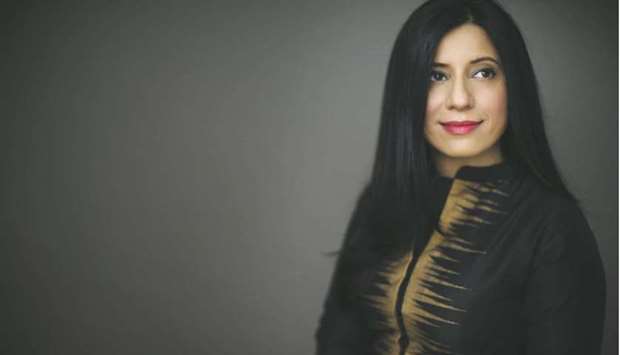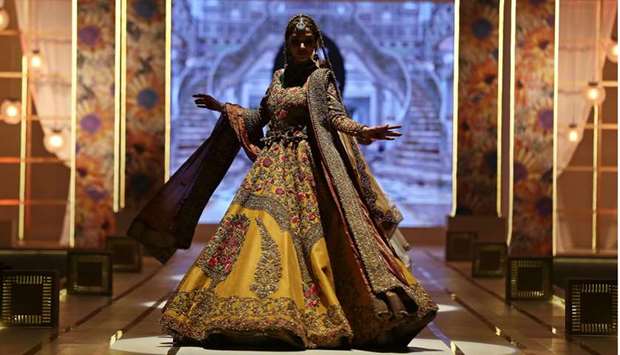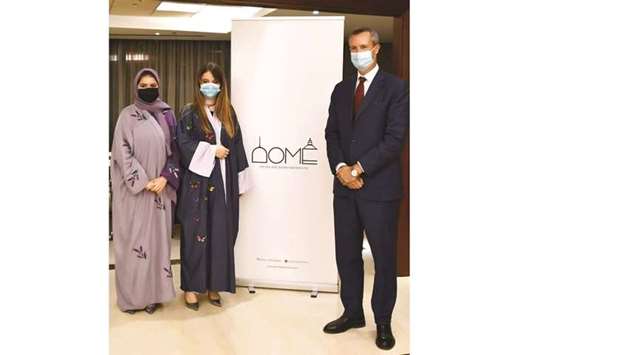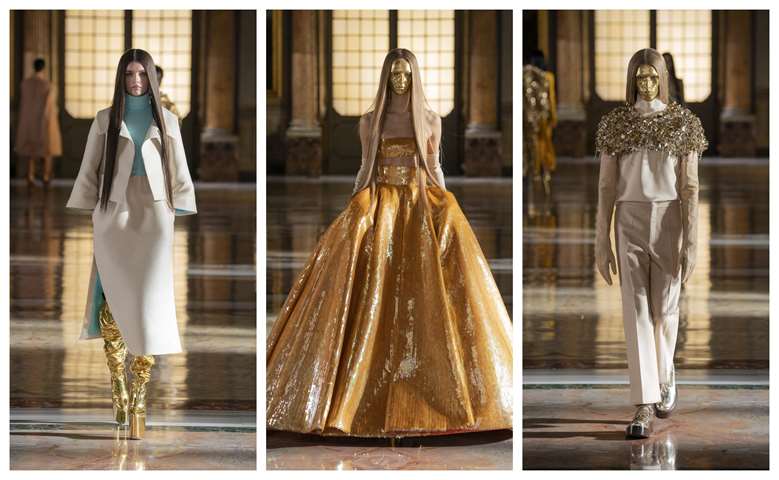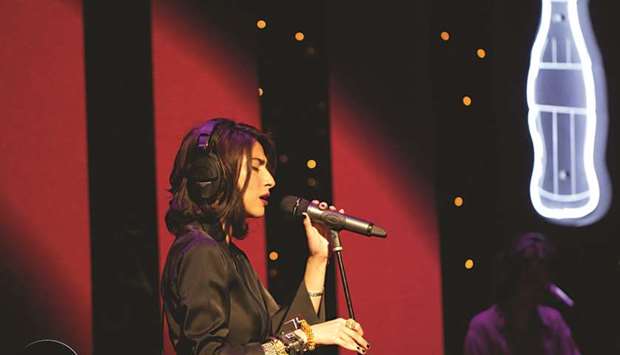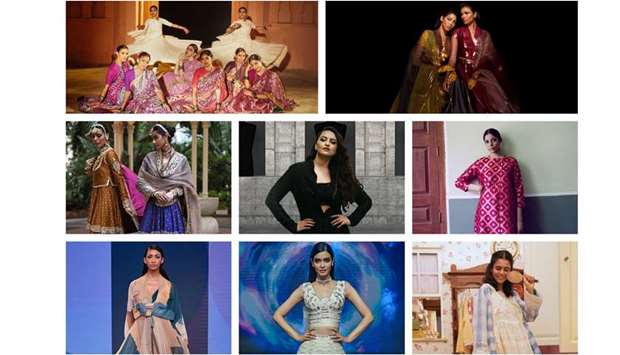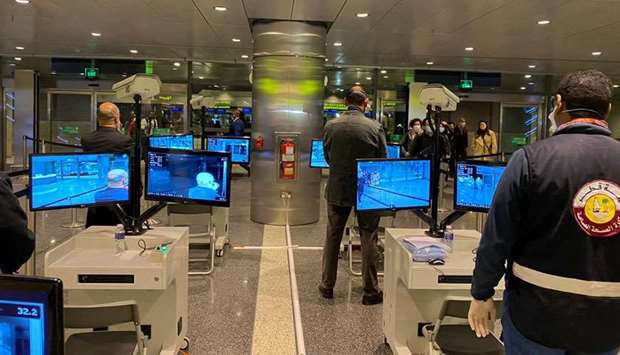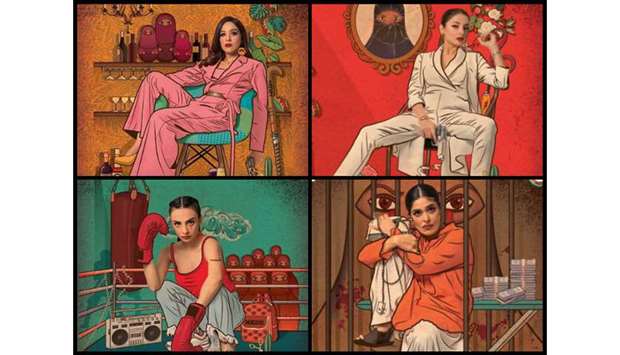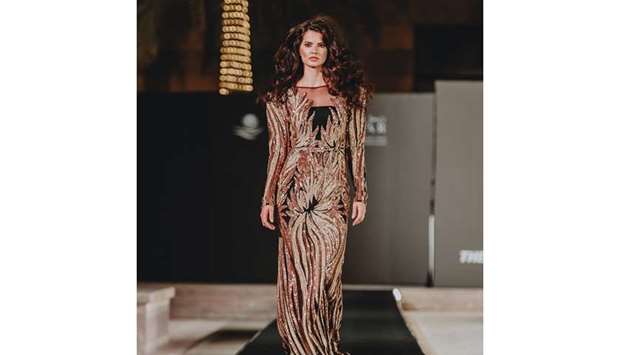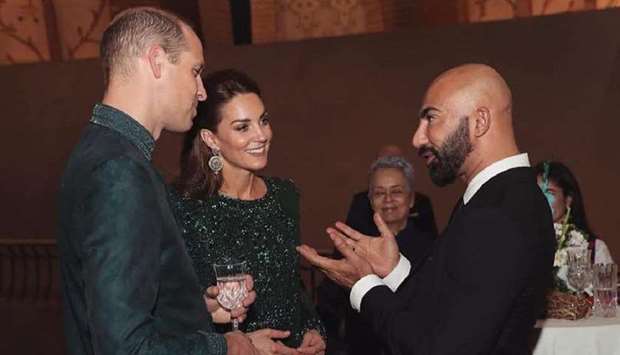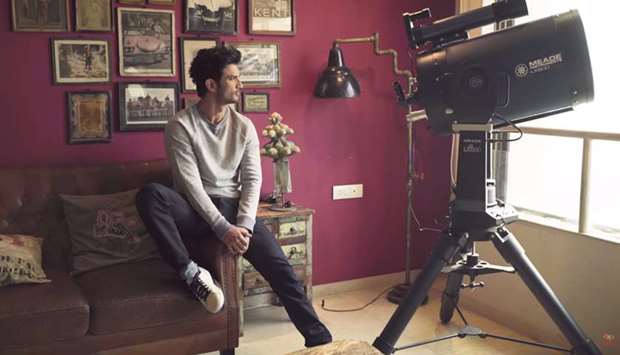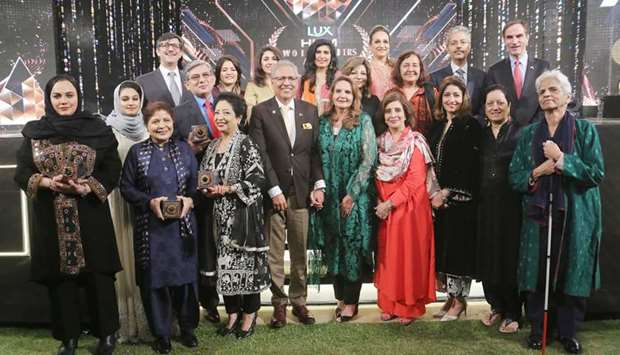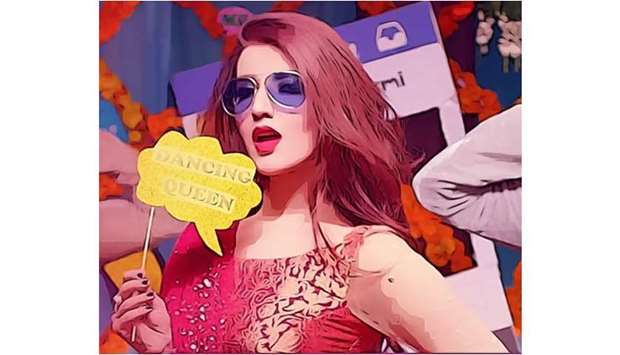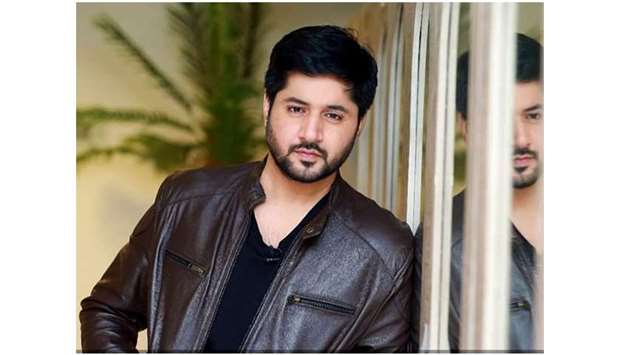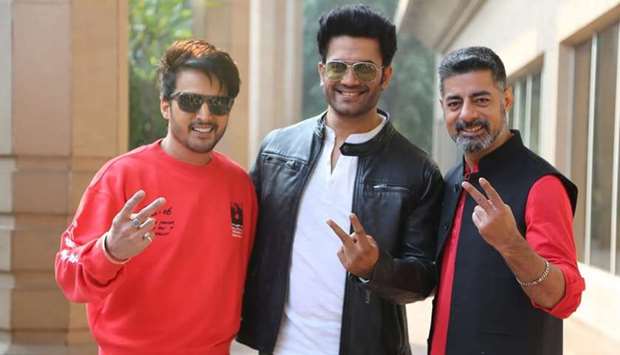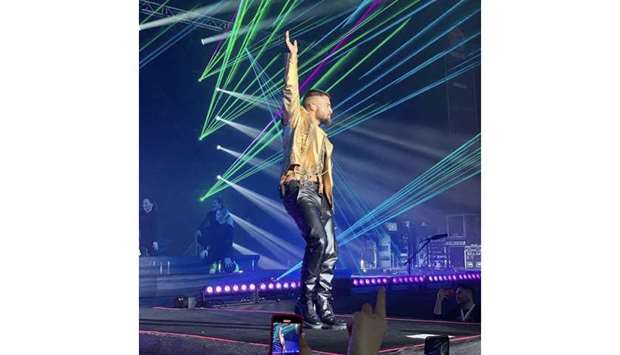Being able to translate ideas into actuality is one thing, but talent coupled with extensive knowledge, ambition, and drive is another story. In her work, as a producer, she portrays women the way she sees herself: strong, powerful, and in control. Speaking with her, you know this is only a glimpse of what’s to come, and thank goodness because Momina Duraid is what Pakistan entertainment industry needs to tell its narrative, and a story to behold. There’s this edginess on what one of the biggest producers of Pakistan’s entertainment industry is going to be like, considering the powerful scripts and screenplays she rolls out. But then you meet her, and she’s wearing a powder yellow ensemble, happily sipping green tea, seemingly overexcited to tell you all about her journey. The woman, Momina Duraid is anything but mysterious or brooding, and you realise that the dichotomy - the hard and the soft, the dark and the light, the difficult and the easy, the approachable and the intimidating - is the ground from which all of her creativity grows that has been a powerhouse of drama serials, doing well not only in Pakistan but famous amongst masses in neighbouring countries as well. Momina sits with Gulf Times to talk about her journey and where she intends to venture in now that she has been leading the industry. Talking about the world we are connected to: fashion, design, photography. There are many examples of people who have changed completely the course of their lives just by grabbing the very opportunity that came their way. Momina’s story is no different. “Well, you can say that it all started by chance. It is something that I never thought I’d be doing. But I got married into a family where my mother-in-law was in media and she used to produce small and one play at a time under the banner of Moomal Productions. For me, before marriage, I always wanted to pursue social sector — with eyes on United Nations, World Bank and organisations like these. I was working with banking sector initially, but I was on a break from my job when my mother-in-law asked me to help her out with finances of her production house and stuff. It all started with that and then because I had a marketing background and knew how brands work, there was this project that she asked me to pitch and make presentation for and it all somehow worked out. I got interested in the project itself because it was about women who after adversity and problems in life rose above it all and became something. So, it was like stories of real women, and the genre was something that I had always been interested in. I used to research on the stories, and how they could be translated on the screen. And when HUM TV happened, I came all out to support Duraid. For the first three years, because my mother-in-law and Duraid were working on HUM Network, I had to oversee the production aspects and I still remember telling them that you have to find somebody else for this job. It was just sheer destiny. The first project that I made for HUM TV did really well, won nominations in every award show of that time. The motivation was not to come in the entertainment industry but to actually support my family and husband in this venture. It was just that. And after that, whichever project I did — it did well. I accredit that to my interest in social reform as well. Because every story that I told had some interesting element or edge to it, something people could relate to.” In times where media industry wasn’t considered a respectable profession, Momina came forefront to change the perception of the people with the stories she had to tell. “Coming from a Pashtun background, I had a totally different perception about media. It wasn’t considered very respectable profession and subconsciously I think I had this thing in my mind, one of the reasons why I had never considered media as a profession. Slowly and gradually, with age, experience, and the effect of your narrative on audience — you just realise that media is basically social reform and a huge responsibility,” Momina adds, “Every dialogue that you approve for going on screen is affecting mindsets. And the day you realise that, you realise what a sharp sword you have in your hands. Media controls the narrative and the moment you realise that it’s a completely different game altogether. I used to get disturbed a lot by mindless entertainment, and so I got to a conclusion that out of certain number of plays that are released every year — atleast 20% or 2 dramas out of 10, I’m going to make for myself, not caring about whether they bag ratings or not. And somehow those two out of ten got the most rating. It wasn’t planned. When we did Udaari (2016) which was about child abuse, we had to make sure that its commercially entertaining yet putting out strong message ahead at the same time. So sketching that balanced line is a huge responsibility.” It is quite a fact in film and drama industry alike that once one particular project is a hit and beaming ratings, other producers, and directors also jump on the bandwagon for coming up with similar content. And the drama serials coming out of MD Productions have been raising a bar for the audiences and makers alike. What’s the mantra of giving back-to-back hits? Momina responds, “There’s no mantra. The only mantra is to be sincere to your work. And then you let it go and let it shine. In a project that has your heart and soul, it goes places. After so many years, now though when I get the script — I just get an idea that whether it will connect with the audience or not. But the line between hit and super hit is destiny, that you don’t know. You can know the basics of what the market wants but nothing really more than that. The script is the foundation of it all then how you translate it to the screen is what matters.” Drama serial Daastan (2010), based on the partition of the Indian Subcontinent and adapted from Razia Butt’s novel Bano, starred Fawad Khan and Sanam Baloch in the leads. The play was so magnificently laced together, that it was as if plucked and sculpted to unravel empathy, pain, loss and last but not least, love. Talking about one of her mega hit serials, Momina says, “Daastan is the play that made me decide that this is the industry I want to stay in. I was an ardent reader from childhood. I had read Bano, a novel by Razia Butt on which Daastan was based, in my childhood sometime. I was searching for Razia Butt, and somehow managed to meet her. We just went to see her for a little while but ended up spending an entire day with her. She kept on suggesting me different novels but was not agreeing on giving me Bano. But, I wanted Bano, because I had fallen in love with it since childhood. So, she said me that Bano is my heritage, and if you couldn’t successfully translate it on screen, then what. And I told her to just trust me because I have myself an emotional attachment with it. She gave me the novel and said that this is a debt on you.” “Somehow there was a huge responsibility on my shoulders but also a dedication to make something that could do justice with it. I was so involved in the project that I went all out to Karachi Lighthouse, which is a second-hand market in Karachi, to get a hands-on on the clothes that people used to bring there from the 40s and 50s era to get the feel of it. So Daastan made me realise what you can do with media and influence people. Because lots of people living abroad, who saw this period drama, left the places they had settled in only to come back to Pakistan.” added Momina. Ever since Dirilis: Ertugrul stormed on to national television in Pakistan, the audience had been infatuated by the historical Turkish production.There have also been plenty of debates on how Pakistani producers need to create similar local content since it’s such a hit with audiences. The argument had also been raised that a private Pakistani producer couldn’t possibly afford to invest in a series of Ertugrul’s stature. “Our industry is a powerhouse of talent. But, can we make another Dirilis: Ertugrul, or another historical play. Do we have the capability to? Yes! Do we have the budgets though? No! If we would try to make such projects on our own, in the budgets we have, we will not be able to make that level of brilliance and do justice to it,” Momina admits. “And if we have the right budget in collaboration, then definitely. There’s nothing wrong in actually making something that could cater to both the markets, conditionally if there are no budget constraints. Ertugrul had run on HUM TV before, when nobody knew about it really here in Pakistan, and when the PM had not tweeted about it. The tweet sort of made people go and look out for it, but it’s the content that made them stick to it. We had also picked it because we thought that it’s a good project.” Dirilis: Ertugrul narrates the story of the leader of the nomadic Kazi tribe who laid the foundation of Ottomon Empire. Asked what kind of historical stories, closer to home, excite Momina Duraid as a producer she says, “We should get into historical plays. It’s a visual medium now and the youth is basically going to learn and pick up from it. For the longest time, I wanted to do a play on the love story of Quaid-e-Azam Muhammad Ali Jinnah and Rattanbai Jinnah. But I also know that it is a very controversial subject for the masses. How many people would be able to take that, that’s an issue. People tell me not to go that route. You live in an environment where there are certain limits. So, to do justice to historical stories like this is a tough, very difficult job.” Momina has actively been recruiting new talent, unearthing and spotlighting faces with potential for the entertainment industry. Mahira Khan is one fine example and her casting in Humsafar (2010), a TV serial on HUM TV, a whole another story. “I rather like to work with new people who put their heart and soul in their work than people who have become complacent. Because the day you’re complacent and you start thinking that you’re just doing perfect and can go and enact without rehearsals or script pre-reading — that day the magic in your work starts fading,” Momina said. “Whenever we introduce someone, we try to place him/her in a character that’s made for him/her. The right fit for the right character.” It is a clear indictment that well-connected parents of a certain background can use their influence to further a child’s career, it is hardly a scandalous or new revelation. If you’ve got famous parents, your chances in the film industry appear to improve exponentially. But only till your debut performance. Pakistan entertainment industry, like any other entertainment industry in the world gives a chance to new talent based on personal connections, family collaborations or friendships. Momina explains that a star kid has more difficulty in making people realise his/her talent because from day one he/she is compared to their parents. “There’s so much responsibility on the star kid to live up to certain expectations. You can get the first project being a star kid but next project and the one after is all because of one’s talent,” she said. In the wake of the global Covid-19 pandemic, cinemas closed, release dates postponed, film festivals had been cancelled and production came to a halt. How will the industry recover, and when it emerges from this crisis, will it look completely different? Momina says, “Pakistan entertainment industry has been affected more because we were at an infancy stage already. So, we had not even taken off yet. But now we’re very hopeful for everything to go back to normal soon.”

Muhammad Asad Ullah
Muhammad Asad Ullah is one of the brightest new crop of journalists on the Doha scene. With a penchant for showbiz stories and a rover's eye on fashion. He's the whiz kid of the team with experience of both print and digital media.
Most Read Stories

